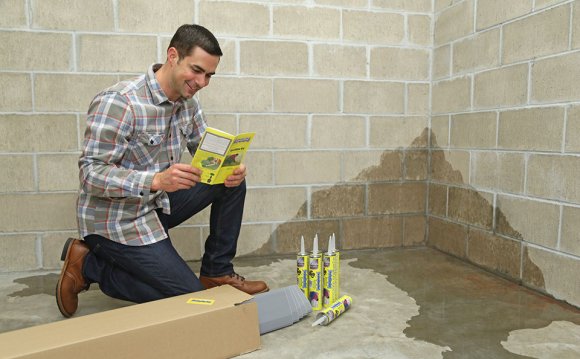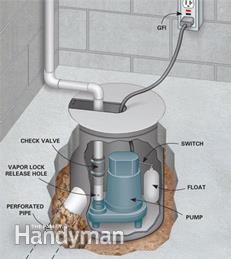
 Once the concrete is removed, dig down to the bottom of the footing but not below. If you compromise the soil under the footing, you could end up with cracks in your wall, or worse.
Once the concrete is removed, dig down to the bottom of the footing but not below. If you compromise the soil under the footing, you could end up with cracks in your wall, or worse.
Five-gallon buckets are OK for hauling out debris, but the guys at Rite-Way use rubber feed buckets (typically used for farm animals) because they fit through small basement windows and are less likely to bang up trim (Photo 3). You can get them at farm supply retailers for under $20. And when it's time to haul the debris away, you may find that the landfill considers it to be “clean fill.” You may be able to dump it for free!
Install the basin
It's best to locate your basin in an unfinished area of the basement so you can have easy access to the sump pump. If you never plan on finishing the basement, locate the basin in the same area where you want the water to drain out of the house so you don't have as much plastic pipe to install. Dig the hole so the top of the basin will sit flush with the finished concrete.
Many basins come with flat “knockout” areas meant to make cutting the hole easier. Don't assume the location of these knockouts will work for your system. Because the pipe will be slightly sloped down toward the basin, the longer the drain is, the lower the pipe will be when it reaches the basin. You never want standing water in your drainpipes, so make sure to choose a model that is deep enough. Our experts typically use 30-in.-deep basins. They use 36-in.-deep models for systems longer than 120 ft., and they install two basins if the drain is longer than 180 ft.
They use 36-in.-deep models for systems longer than 120 ft., and they install two basins if the drain is longer than 180 ft.
Set the basin in place, and then mark the locations for the holes where the pipes will meet the basin. Keep in mind there will be a thin layer of rock (one layer thick) under the pipe near the basin. Cut the holes using a reciprocating saw, jigsaw or hole saw. The holes don't have to be perfect.
Don't haul out all the dirt right away; you'll need some to fill in around the basin. Once it's permanently in place, fill in around it, tamping the dirt with a 2x4 as you go.
Caution: Never drill holes in the bottom of the basin! If you have a high water table, water could come up from the bottom, and your pump will run nonstop, attempting to dry out the neighborhood.
Figure A: Drain detail








